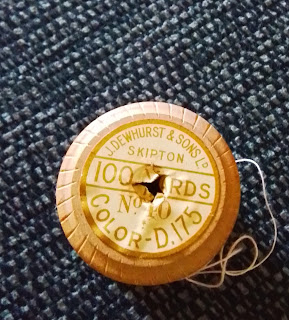Emerald, Hunter's, Erin and Grass...
Despite a long history of the colour green being considered unlucky (because it belonged to the faeries and other creatures that it was wise not to "steal" from), by the early 1930s it was an incredibly popular fashion choice. Particularly at weddings. One local newspaper wedding write up in the early part of the decade observed that the bride and her bridesmaids had eschewed tradition by dressing in the colour. Search the British Newspaper Archive for "Apple Green" and "Eau-de-Nil" throughout the 1930s and it appears in countless wedding write ups as the colour of a gown.
In 1933, the Falkirk Herald's "Feminine Reflections" page contained advice on which shade of green to choose. It was titled "Tricky Green" and was written by Violet Dismore.
"Superstition about green has in the past saved many women from making some bad mistakes in the choice of colour, because all shades of green were debarred from their wardrobe....comparatively few seem aware that there is danger in green - not in the superstitious sense, but in matter of shade."
Violet tells us that to wear the wrong shade for your natural colouring is asking for trouble - for all your weak points to be highlighted. The sallow become more so, pale girls look as though they are sick. She goes on to offer guidance. Only wear bottle green if you are blonde or have a bright complexion. Only wear emerald or lettuce if you are very young. Grass green is great for a readhead, while the darker haired should go for moss. Confused? Then Myrtle or Sage are your best bets, as they will suit most people.
This demonstrates that the 1930s had become the age of reason, the machine age where we no longer bowed to nature, but controlled it and used it to our best advantage.



Comments
Post a Comment